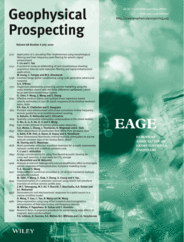
Full text loading...
 , Zhengguo Yan1,2
, Zhengguo Yan1,2
Inspired by the idea of the iterative time–frequency peak filtering, which applies time–frequency peak filtering several times to improve the ability of random noise reduction, this article proposes a new cascading filter implemented using mathematic morphological filtering and the time–frequency peak filtering, which we call here morphological time–frequency peak filtering for convenience. This new method will be used mainly for seismic signal enhancement and random noise reduction in which the advantages of the morphological algorithm in processing nonlinear signals and the time–frequency peak filtering in processing nonstationary signals are utilized. Structurally, the scheme of the proposed method adopts mathematic morphological operation to first preprocess the signal and then applies the time–frequency peak filtering method to ultimately extract the valid signal. Through experiments on synthetic seismic signals and field seismic data, this paper demonstrates that the morphological time–frequency peak filtering method is superior to the time–frequency peak filtering method and its iterative form in terms of valid signal enhancement and random noise reduction.

Article metrics loading...

Full text loading...
References


Data & Media loading...

